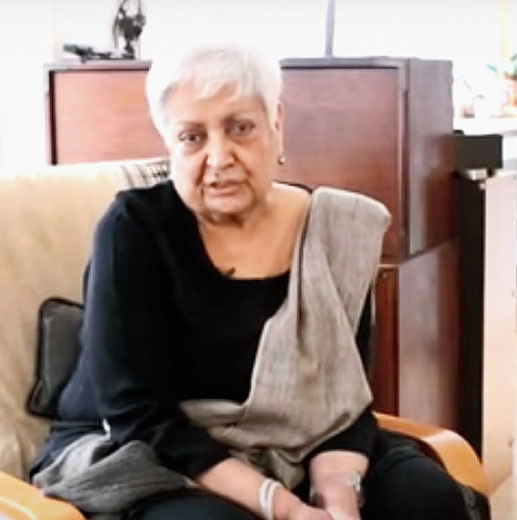Zarina Hashmi, the spare and austere beauty of whose work spanning from drawing to printmaking and sculpture could remind one of the Kufic script of Arabic calligraphy, died in London on Saturday.
She may have been born in Aligarh in 1937, and Urdu may have been the language she was conversant in, but her ancestors being from Punjab, she declared that “my mother tongue is art”.
Zarina was one of the few Indian women artists, besides Nasreen Mohamedi, to have emerged at a time when M.F. Husain, Gaitonde and Tyeb Mehta were her peers.
She had left India in 1958 with her diplomat husband, and spent the better part of her life in New York. So for her, her watan or home “is not really a place” although she acknowledged that “India is my heritage”.
Her family had moved to Karachi after the Partition, so, her identity was that of an exile. Being forever in transience, for Zarina, who preferred to be called by her first name, home was a fluid, abstract space that had no single geographical location. Partition, migration and loss of home are, no wonder, recurring themes in her work.
Zarina belonged to a family of academics, and she had earned a degree in mathematics from Aligarh Muslim University.
The grandeur of Mughal architecture and its structural purity had made a deep impact on her mind and art, and her deep interest in geometry, and later astronomy, contributed to the spartan simplicity and abstraction of her work, though their emotional and spiritual import is undeniable. Yet the influence of American minimalism and European modernism is also apparent.
After moving from Aligarh with her husband, she stayed in Bangkok, Paris and Bonn. While in Paris in the mid-1960s, she joined Atelier 17 of Stanley William Hayter, which was almost a second home for many of her Indian contemporaries.
Later in 1974, she was trained in Tokyo by Toshi Yoshida, the Japanese printmaking artist. Thereafter, she moved to America and joined the growing feminist art movement, thereby becoming part of a bustling artistic community.
She supported herself by making prints for masters such as Picasso and Dali, and later teaching in various universities, at a time when artists of foreign origin were given no quarter.
Through the 1970s and 80s, while living in the US, Zarina had held solo shows in Delhi, Bombay and Karachi. She represented India in its pavilion at the Venice Biennale in 2019. Zarina’s work has featured in major exhibitions and is represented in important public collections, including those of the Hammer Museum, Museum of Modern Art and the Guggenheim Museum in New York, the V&A in London and the NGMA in Delhi.











